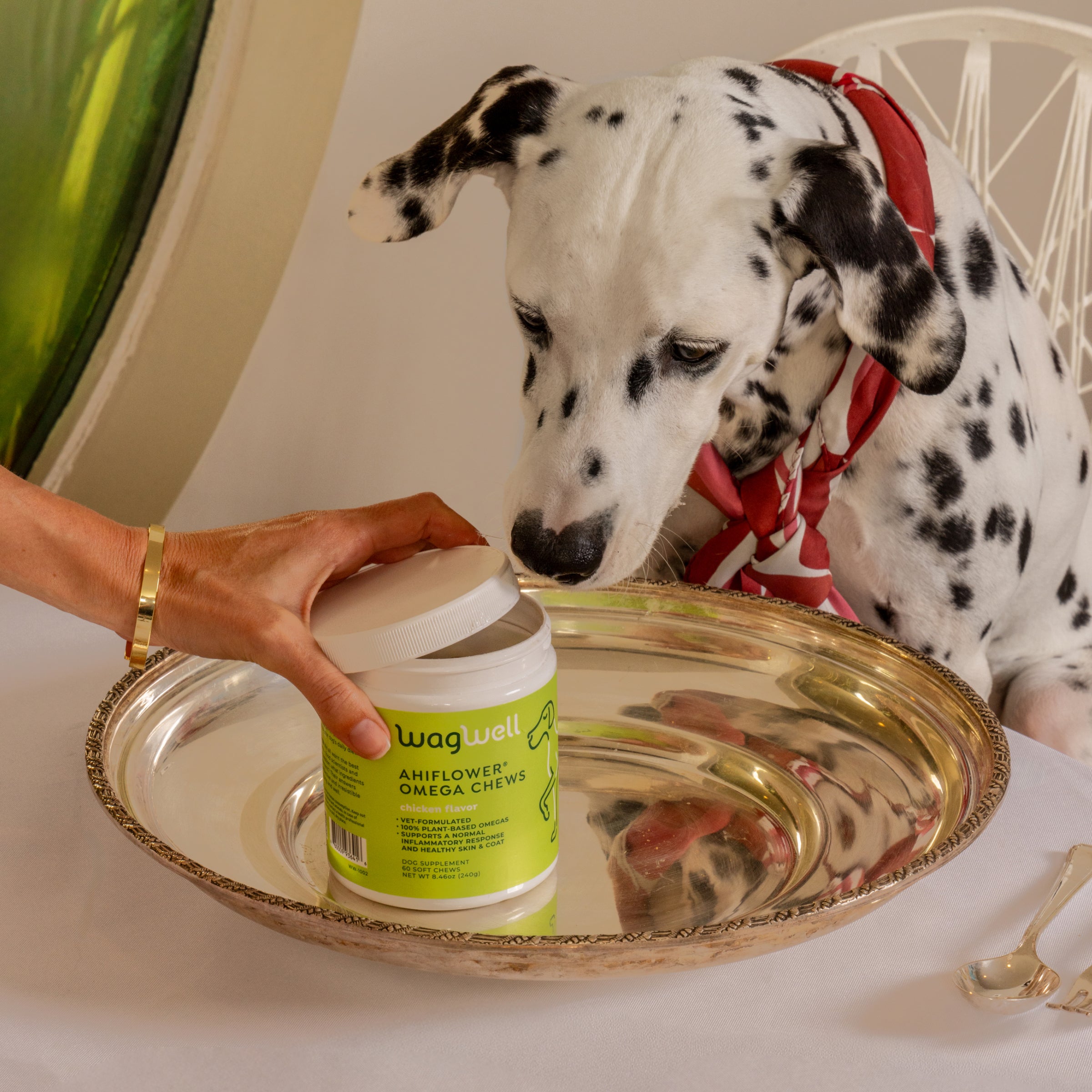

Springtime brings more than just flowers. With pretty petals comes a foe: pollen and allergies. Our pets can suffer just as much, if not more, from allergies that leave them itchy and uncomfortable. Many pet parents may not realize their dog is struggling with allergies, as the symptoms can be subtle or mistaken for other issues.
Types of Allergies in Dogs
Just like humans, dogs can develop allergies to various triggers. The most common types include:
- Environmental Allergies: Pollen, dust mites, mold, and even grass can trigger allergic reactions in dogs, leading to season or year-round discomfort.
- Food Allergies: Some dogs are sensitive to common ingredients like chicken, beef, dairy, wheat or soy, resulting in digestive issues or skin irritations. It's important to note that food allergies are difficult to diagnose and are frequently identified with an elimination diet.
- Flea/Pest Allergies: Even a single flea bite can cause intense itching and discomfort for dogs allergic to flea saliva.
- Contact Allergies: Certain shampoos, cleaning products, fabrics, or other substances can cause localized reactions on your dog's skin.
If you are worried that your dog may have allergies, consulting a veterinarian can help determine the cause and best course of action.
Common Signs of Allergies
Allergies in dogs can be sneaky, sometimes showing up in ways that aren't immediately obvious. If your dog is dealing with any of these symptoms, allergies could be a culprit.
- Excessive Itching & Scratching: If your dog is constantly scratching, licking, or chewing their paws, allergies may be to blame. Skin irritation is one of the most common allergy symptoms.
- Chronic Ear Infections: Recurring ear infections, especially in breeds with floppy ears, could indicate an underlying allergy.
- Red or Irritated Skin: Dogs with allergies often develop red, inflamed skin, sometimes leading to hotspots or hair loss.
- Frequent Licking: Constant licking, particularly around the paws, can be a telltale sign of allergies.
- Watery Eyes & Sneezing: Just like humans, dogs can experience allergy-related symptoms.
- Digestive Issues: Vomiting, diarrhea, or excessive gas could be signs of a food allergy or intolerance.
If you notice any of these symptoms, it's worth considering allergies as a possible cause. The next step is figuring out what's triggering them and how to provide relief.

Solutions to Ease the Impact of Allergies
Once you suspect allergies, there are several ways you can help your dog feel more comfortable.
- Identify the Allergen: Work with your vet for allergy testing or an elimination diet to pinpoint the trigger. Once identified, it will be easier to avoid the trigger.
- Modify Their Diet: If food allergies are suspected, switch to a limited-ingredient or hypoallergenic diet with novel or hydrolyzed protein sources.
- Use Supplements: Supplements like WagWell's Allergy & Itch Chews contain special active ingredients that aim to soothe the immune system, lessening the impact of allergies.
- Regular Baths: Grooming is an important factor in fighting allergies. Use hypoallergenic and skin-safe shampoos to wash away allergens and soothe irritated skin. One thing to note: too-frequent baths can sometimes worsen skin conditions. Supplement daily baths with wiping your pet's coat with a grooming wipe.
- Maintain a Clean Environment: Wash bedding, vacuum frequently, clean paws after being outside, and use air purifiers to reduce dust, pollen, and allergens.
When home-based methods no longer work for your pet, veterinarians can provide prescription medication or allergy shots to help manage symptoms effectively and improve your dog's quality of life.
Final Thoughts
If your dog has been suffering in silence, addressing their allergies can be life-changing. Whether it's tweaking their diet, trying new treatments, or making small changes at home, there are plenty of ways to help them feel their best. The key is to be observant, proactive, and always work with your vet to find the best solution for your dog.




